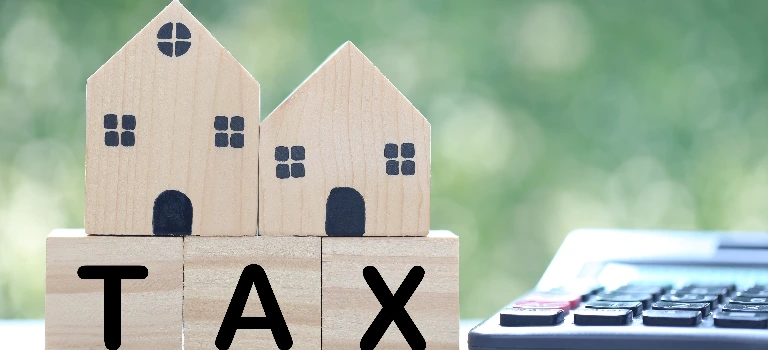- Selling
- Buying
- Landlords
- Renting
- New homes
- House prices
- International services
International offices
China, Hong Kong SAR, India, Indonesia, Malaysia, Middle East, Pakistan, Qatar, Singapore, South Africa, Thailand and Turkey
Learn more - Contact
- News
- Contact
- About us
- My B&R
Home News
Advice clinic
Warning – Beware of ‘non-UK resident’ taxes and penalties on UK property disposals
Warning – Beware of ‘non-UK resident’ taxes and penalties on UK property disposals
- Advice clinic
- 08.11.24
- Marc von Grundherr
|
Getting your Trinity Audio player ready...
|
Since April 2015, all non-resident or overseas UK property owners have been liable to pay Capital Gains Tax (CGT) on the sale of UK residential properties and since April 2019 for UK commercial properties.

UK residents and non-residents must report and pay CGT within 60 days of the property sale completion.
Missing this 60-day deadline results in hefty fines, penalties and interest from HMRC and more importantly underreporting or failing to report anything could lead to a full investigation by the UK tax authorities which no one wants as this could go back years. The fines start at only £100 but these really increase at a huge rate due to delays in reporting. If the payment is more than six months late then an additional fine of £300 or 5% of the tax due (whichever is higher) is charged, in addition to interest which accrues on the unpaid tax at 7.75% per year (as at 29 October 2024).
Background on CGT for non-residents
Before April 2015, non-UK residents were exempt from CGT on UK property sales. However, this all changed on 6 April 2015, when CGT was payable by non-residents on all gains made after 6 April 2015 when a residential property is sold. This rule simply evens up the tax treatment of non-residents in line with UK residents – it was viewed as grossly unfair that UK residents pay a tax but non-residents don’t!
It is therefore paramount that non-residents seek expert tax advice on CGT – confusingly there are 2 methods for calculating the CGT due if the property was purchased before 6 April 2015:
1) the straight-line method (also known as time apportionment); or
2) the valuation method (also known as rebasing).
Both methods have very different financial outcomes, so sellers need to be careful in which one to use to calculate the tax payable.
Which method should I use, as a non-resident, to calculate the CGT payable?

METHOD 1 – STRAIGHT-LINE OR TIME APPORTIONMENT
The straight-line method allows non-resident sellers to calculate CGT based on the property value at the time of purchase and its growth over the course of ownership, and then calculating the pro-rata gain made from April 2015 up to the date of sale.
So, to help explain we have taken an example of one of our Singaporean clients who sold a flat last year and 2 clients based in Dubai who sold their flat 2 years ago.
Example 1 One of our non-resident clients based in Singapore bought a flat in London for £172,000 in 2002 and sold it for £525,000 in 2023. The total gain is £353,000 over the 21 years of ownership. The average annual growth would therefore be £16,810 (£353,000 divided by 21 years).
CGT only applies from April 2015, and the gain was calculated the gain for the 8 years between 2015 and 2023. At an annual gain of £16,810, the total taxable gain would be £134,480 (8 x £16,810).
Next, you subtract the annual CGT allowance of £3,000 per person – our Singaporean client owned it in her sole name, leaving the taxable gain of £131,480. The tax rate for CGT on property sales by non-residents is between 18% and 24% depending on the level of income in the year of disposal, so assuming the higher rate, the total CGT payable would be 24% of £131,480 = £31,555.
Example 2 Another non-resident client based in Dubai paid £670,000 in 1996 for a 3-bedroom flat in London and sold it 2022 for £2,150,000, earning a significant gain of £1,480,000. The annual gain was £56,923 (£1,480,000 divided by 26 years).
CGT on the straight- line method is due for 7 years from 2015 to 2022. At an annual gain of £56,923, the total taxable gain would be £398,461 (7 x £56,923).
After deducting the annual CGT allowance for 2 people of £6,000, left the seller’s taxable gain at £392,461, so the total CGT payable at the higher rate would be 24% of £392,461 = £94,190.
While the straight-line method does provide a clear and easy way to calculate CGT for non-residents who owned residential properties before the rules changed on 6 April 2015, nearly always sellers pay more tax and so advice is essential.
METHOD 2 – VALUATION OR REBASING

The second method of calculating CGT for non-residents is based on a valuation of the property as at 6 April 2015. This valuation is then used to “rebase” the property’s value, and CGT is then ONLY payable on the gain made from 2015 to the point of sale. This method is much more tax efficient for non-resident sellers with properties in London as the growth of property prices in London has been relatively low since 2015, thereby meaning the gain from 2015 is low and accordingly the CGT much lower.
So, we will use the above examples of our Singaporean and Dubai clients to show the difference in the taxes payable
Example 1 To recap, our Singaporean client bought the flat for £172,000 in 2002 – we had a professional RICS valuer carry out a valuation of the property as at 6 April 2015 and it was valued at £500,000. The property sold for £525,000 in 2023. The gain from April 2015 to July 2023 was £20,000 (£525,000 – £500,000).
After deducting CGT allowance of £3,000, the taxable gain is reduced to £22,000.
The CGT payable was then only 24% of £22,000 = £5,280.
That’s a huge tax difference
Method 1: £31,555
Method 2: £5,280
A huge tax saving of £26,275.20 by choosing the Valuation or Rebasing Method!
Example 2 To recap, our Dubai clients paid £670,000 in 1996 – we had a professional RICS valuer valued the property at 6 April; 2015 for £1,950,000. The property sold for £2,150,000 in 2022. The gain from April 2015 to February 2022 was £200,000 (£2,150,000 – £1,950,000).
After deducting CGT allowance of £6,000 (as 2 owners), the taxable gain is reduced to £194,000.
The CGT payable was then only 24% of £194,000 = £46,560.
That’s again a huge tax difference
Method 1 £94,160
Method 2 £46,560
A huge tax saving of £47,600 by simply selecting the Valuation or Rebasing Method!
By opting for the Revaluation or Rebasing method, both the Singapore and the Dubai seller significantly reduced their respective CGT liabilities by almost 597% and 49% compared to the straight-line method, demonstrating how choosing the right calculation method will save non-resident sellers save thousands, tens of thousands and even hundreds of thousands of pounds.
WARNING – Big fines if you miss the CGT reporting deadline
Sellers of UK property MUST legally submit a CGT report within 60 days of the sale date or face substantial penalties by HMRC.
Again, let’s use the 2 clients as examples as if they both missed the deadline
| Scenario | CGT Liability Method | CGT Liability | Initial Penalty | Daily Penalty (3 Months) | Late Filing (6 Months) | Late Filing (12 Months) | Late Payment (5%) | Additional Late Payment (6 Months) | Additional Late Payment (12 Months) | Interest @7.75% | Total Penalties | Total CGT with Penalties |
|---|---|---|---|---|---|---|---|---|---|---|---|---|
| For Singapore Seller | 9 Months Late | Straight-line | £31,555 | £100 | £900 | £1,578 | NA | £1,578 | £1,578 | NA | £1,832 | £7,566 | £39,121 |
| 9 Months Late | Rebasing | £5,280 | £100 | £900 | £300 | NA | £528 | NA | NA | £307 | £2,135 | £7,415 |
| Saving | £26,275 | £5,431 |
£31,706 |
|||||||||
| 20 Months Late | Straight-line | £31,555 | £100 | £900 | £1,578 | £1,578 | £1,578 | £1,578 | £1,578 | £4,088 | £12,978 |
£44,533 |
| 20 Months Late | Rebasing | £5,280 | £100 | £900 | £300 | £300 | £528 | NA | NA | £683 | £3,075 |
£8,355 |
| Saving | £26,275 | £9,903 |
£36,178 |
|||||||||
| For Dubai Seller | ||||||||||||
| 9 Months Late | Straight-line | £94,190 | £100 | £900 | £4,710 | NA | £4,710 | £4,710 | NA | £5,483 | £20,613 |
£114,803 |
| 9 Months Late | Rebasing | £46,560 | £100 | £900 | £2,328 | NA | £4,656 | NA | NA | £2,706 | £10,690 |
£57,250 |
| Saving | £47,630 | £9,923 |
£57,553 |
|||||||||
| 20 Months Late | Straight-line | £94,190 | £100 | £900 | £4,710 | £4,710 | £4,710 | £4,710 | £4,710 | £10,210 | £34,760 |
£128,950 |
| 20 Months Late | Rebasing | £46,560 | £100 | £900 | £2,328 | £2,328 | £6,984 | NA | NA | £5,048 | £17,688 |
£64,248 |
| Saving | £47,630 | £17,072 |
£64,702 |
|||||||||
NOTE – as we carefully advise Benham and Reeves clients on the deadlines, neither client mentioned above paid any penalties or interest as we always file CGT returns with HMRC in time.
Patience is rewarded over penalties
While the penalties and additional interest for late CGT filings are high, it is vital to bear in mind these taxes and penalties are based on profits and even with penalties after 20 months our clients made substantial profits in their London properties. Our Singapore-based seller saw a 105% gain while our Dubai clients made a 220% profit on their London property investment and that doesn’t even take into account the very strong income they received throughout the whole investment term. Moreover, the returns were actually far higher based on our client’s cash investment as both took out loans of 65% of the purchase price meaning that in fact our Singaporean client’s real return on cash was a huge 872% and our Dubai clients real return was just under 1000%.
There are very few investments that can give such returns, especially bearing in mind the stability and lack of volatility of owning a London property!
Therefore, in spite of UK taxes, these 2 clients real life experience show that investing in London property is a highly profitable investment over the long term.
Disclaimer: This content is for informational purposes only and should not be considered tax advice. We recommend seeking independent tax advice tailored to your circumstances. For more information, please feel free to get in touch with us.
Sign up to our newsletter
Subscribe
How much is your property worth?
Media enquiries
About the Author
Marc has been a board director since 2001 and oversees the company’s rental operations as well as developing new business. He is instrumental in the company’s expansion and works closely with Managing Director Anita Mehra to develop its core services. Read more about Marc von Grundherr here - Read full profileView all posts by Marc von Grundherr
Avatars by Sterling Adventures














